#césar manrique
Text
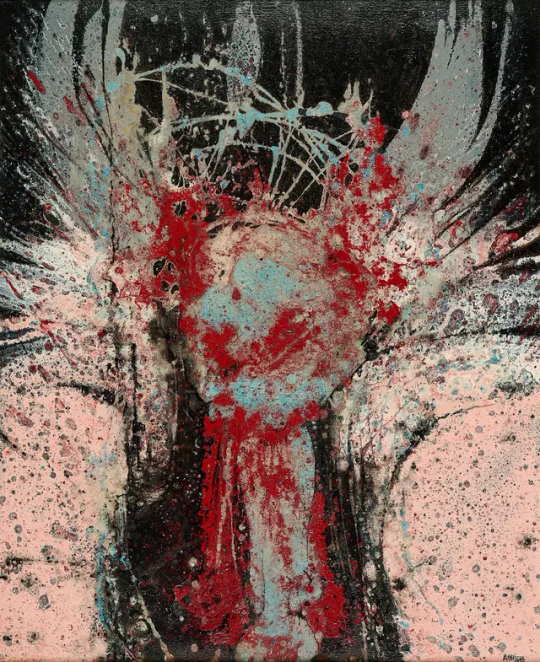
César Manrique (Spanish, 1920-1992), Tapon, 1988. Mixed media on paper, 110 x 90 cm.
187 notes
·
View notes
Text
Lanzarote

Lanzerote, Arrecife, -Eglesia San Ginés
Das Wunder des Lichts
César Manrique, der Inselarchitekt

César Manrique, der Inselarchitekt
Ohne ihn läuft hier nichts. Sogar die Kunstwerke, die von Jesús Soto, Paco Curbelo oder José Saramago stammen, sind von César Manrique. In welcher seiner vielen Sprachen er sich auch ausdrückte, Malerei, Architektur, Bildhauerei, Poesie, Gartengestaltung oder Stadtplanung, der Wille, seine Heimat zu einer grandiosen Neuschöpfung aus Kunst und Natur zu formen, bestimmte das Leben des Inselarchitekten. Die „totale Kunst“ bestimmte seinen Anspruch, (äußere) Schönheit mit (innerer) Ruhe in Einklang zu bringen. Dass dabei sein Hang zu Society und Jetset nicht auf der Strecke blieb, lässt sich aus jedem seiner grandiosen Land-Art-Werke herauslesen. Wer war der Wunderknabe, und wie baute er Macht, Kunst und Einfluss auf? Der Devisenbringer ist aus Lanzarote ebenso wenig wegzudenken, wie Lava und Licht. Der vielseitig Begabte machte sich beides zu nutze. Ob in den abstrakten Gemälden, den omnipräsenten, farbenfrohen Skulpturen, die sich mit oder gegen den Wind drehen, und die Straßen ebenso prägen wie die aufsehenerregenden architektonischen Entwürfe – seine Arbeiten verherrlichen die Schönheit der Insel, ihre schroffe Aristokratie und ihre von Feuer und Vulkangestein geprägte Landschaft.



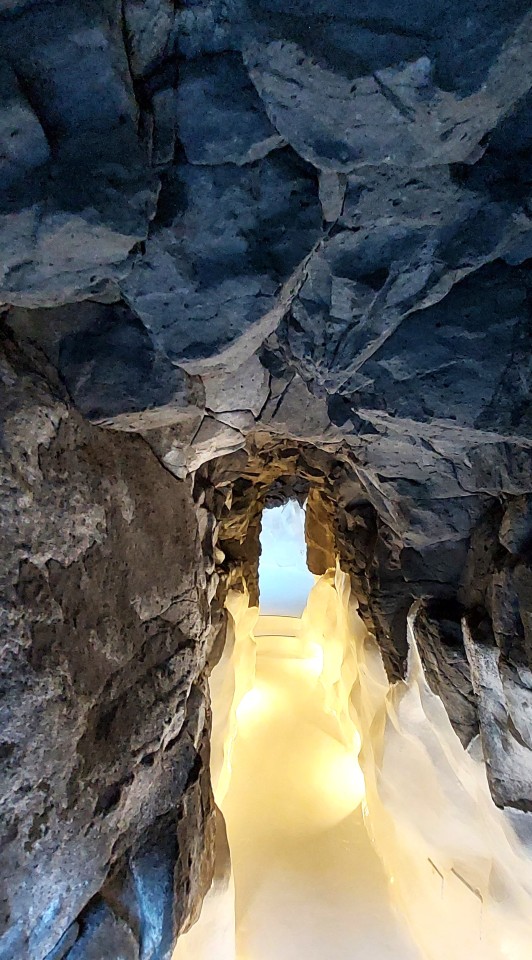
Fondacion Manrique
César Manrique war Visionär, Diktator und Lebenskünstler, er war Andy Warhol, Fidel Castro und Gunther Sachs in einer Person. Ob Gärten, Museen, Villen, Restaurants, Aussichtswarten, Windspiele oder Landschaftsskulpturen, Manrique hat die Insel geprägt. Wer hat seinen Landsleuten schon den Farbton ihrer Häuser vorgeschrieben. Die Farben Weiß und das spezielle „Manrique-Grün“ gehören zum gesamtheitlichen Konzept. Und die Bewohner, sie ließen sich’s gefallen. Kaum ein Land wurde so nachhaltig von einem Künstler entworfen und geformt, wie Lanzarote, und – der Geniestreich ist gelungen. Es gibt wohl niemanden, der dem widerspricht. Da verwundert es auch nicht, dass sogar der Flughafen den Namen „César Manrique“ trägt. Kaum, dass der glitzernde Ferienvogel den Boden der Insel berührt, werden die Passagiere darauf hingewiesen, in wessen Hand sie sich befinden. Und wenn wir schon beim „Verkehr“ sind: Auf den Straßen fahren Autos, deren Lackierung eines der knallbunten Gemälde aus des Meisters Werkstatt zeigt…
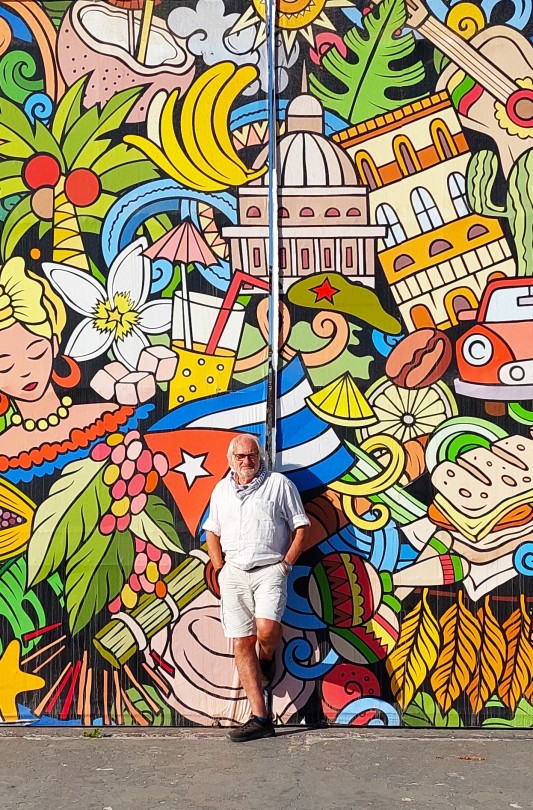
Arrecife, Autor im Bild
Der Insel-Genius hat mehr erreicht, als je ein Künstler vor ihm. Blickt man auf die wild zerklüftete Küste bei El Golfo oder auf die pittoreske Mischung zwischen dem omnipräsenten schwarzen Lavagestein und dem teilweise aufgeschütteten weißen Sand der Strände – vermutet man sogar hier die Handschrift Manriques. Auch in Sachen Ökologie, Stadtarchitektur und Umweltpolitik stößt man auf seine Einflussnahme. Werbetafeln in- oder ausländischer Konzerne sucht man auf der Insel vergeblich - was einem gar nicht sofort auffällt – genau wie das gänzliche Fehlen von Touristen-Hochburgen oder anderen nicht mehr wieder gut zu machenden Bausünden. Der weitgreifende Kunstanspruch des Ausnahmekünstlers prägt Lanzarote ebenso wie die gewaltigen Vulkankegel.
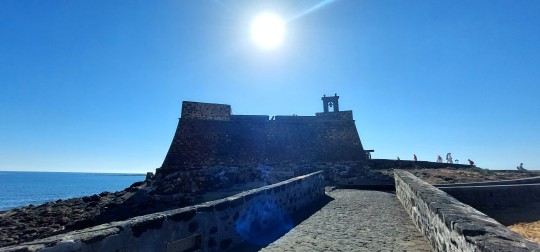
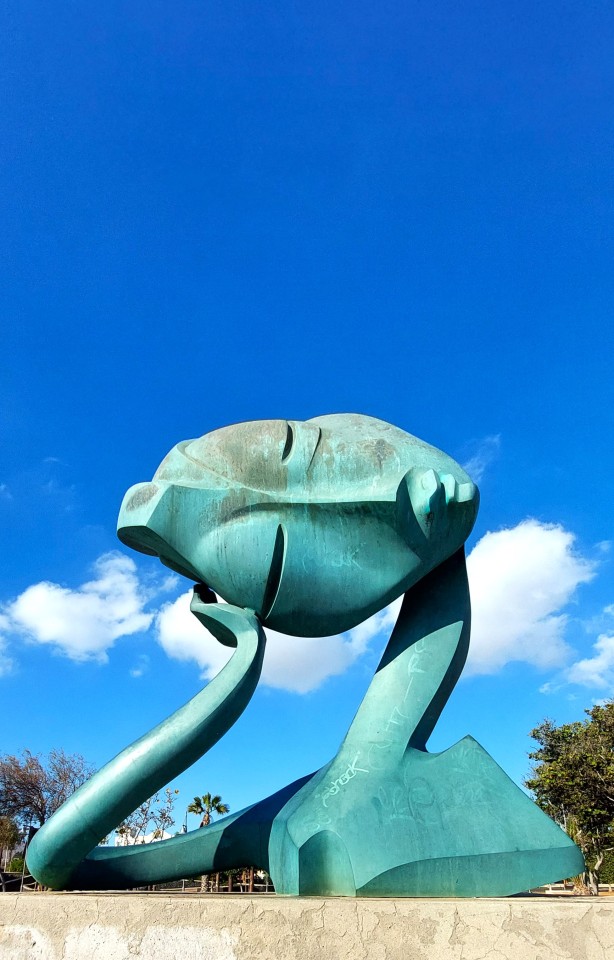
Wundert es, dass sich der umtriebige Herr Architekt nicht nur Freunde gemacht hat? Seine Künstlerkollegen wurden von der Übermacht des Maestros erdrückt, und auch die Immobiliensachverständigen formierten sich mit der Zeit gegen Manrique, stand der doch bei beinahe jedem zweitem Bauprojekt auf der Bremse – und die Inselregierung folgte ihm. Keinesfalls wollte er zulassen, dass seine geliebte Insel am Altar des Massentourismus geopfert wird. Die ästhetische und ökonomische Integrität Lanzarotes ging ihm über alles. Die mächtigen Geister die er dabei zu Hilfe rief, wurde er bald schon nicht mehr los und je kostbarer die Insel wurde, desto mehr boomte sie auf den internationalen Ferienbörsen. Je exklusiver, desto begehrter. Immer mehr Menschen wollten teilhaben an den Gossip-Geschichten der bunten Illustrierten über das Insel-Lotterleben des Meisters. Die Anzahl der Übernachtungen explodierte, sanfter Tourismus hin oder her.
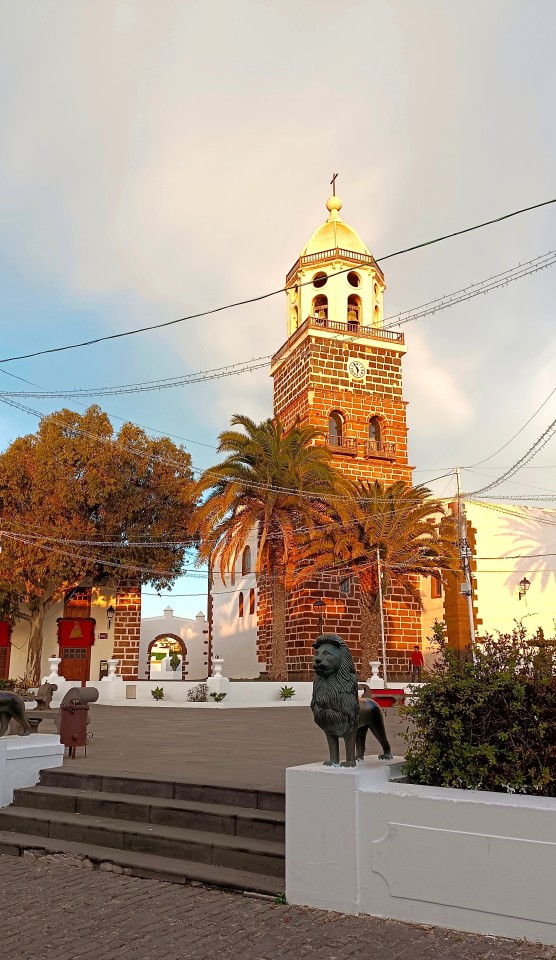
Teguise, Plaza de la Constitución
Der Unfalltod Manriques am 25. September 1992 erschütterte die Insel nachhaltig, von den internationalen Klatschspalten ganz zu schweigen. Sogar das Ende war an Theatralik nicht zu überbieten: Mit seinem Jaguar raste der Inselkaiser auf eine Kreuzung zu, unmittelbar darauf wurde er von einem schweren Geländewagen „abgeschossen“. Schenkt man der Insel-Fama Glauben, schlug die Bau-Mafia zu. Sogar sein Tod bewirkte Erstaunliches: Seither gibt es auf Lanzarote keine Überlandkreuzungen mehr, sie wurden in Kreisverkehre umgewandelt, in deren Mitte zumeist große Mobiles aus des Märtyrers Hand stehen, die sich in die verschiedensten Windrichtungen drehen und wenden. Symbolträchtiger wurde wohl noch keinem Künstler gedacht.

Villa LagOmar
Die Sehenswürdigkeiten der Insel-Mitte:
César Manrique Fondacion – Das erste Wohnhaus Manriques ist als Museum begehbar. Wer wissen will, was Geschmack bedeutet, muss dorthin.
Arrecive – Hafen und Hauptstadt. Weit mehr als nur Meer-Promenade, Castillo San Gabriel, Islote de Femina und Castillo de San José (inkl. Kunstmuseum)
Teguise – Zauberhafte, ehemalige Inselhauptstadt mit prächtigem Hauptplatz vor der „Iglesia de Nuestra Señora de Guadalupe“, in der eine Christusfigur mit Langhaarperücke schwebt und eine Büste des spanischen Literatur-Nobelpreisträgers steht („Durch seine Gedanken kann der Mensch die Wahrheit entdecken, die verborgen in der Welt umgeht“)
San Bartolomé – Besuchenswerte Stadt in der geografischen Mitte Lanzarotes. Vor dem Rathaus und der Pfarrkirche fühlt man sich um Jahrhunderte zurückversetzt.
Tao – hier und rundum in den Nachbarorten finden die populären Ringkämpfe der Giganten, den „Luchadores“ statt, z.B. in der Arena „Lucha Canaria“ statt. Keinesfalls versäumen!
Villa LagOmar in Nazaret - „Dr. Schiwago“ Omar Sharif kaufte die Traumvilla und verspielte sie noch am selben Abend beim Bridge. Nicht nachahmens- aber empfehlenswert.
El Jable, alttestamentarisch anmutende Sandwüste beim Örtchen Soo.
Die Wunderwelt der spektakulären Gesteinsformationen „Las Grietas“ in den Montana Blanco ist Lanzarotes Antwort auf den „Grand Canyon“ Arizonas.
Surf-Süchtige müssen zum Wind- und Wellenparadies „Caleta de Famara“.
Der „Playa de Matagorda“ ist die Touri-Einflugschneise: Düsenjets zum Anfassen!
El Jable, die Sandwüste – Las Grietas – Stratified City – Caleta de Famara:
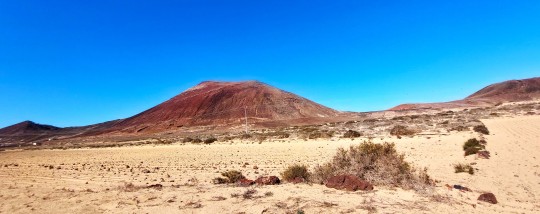

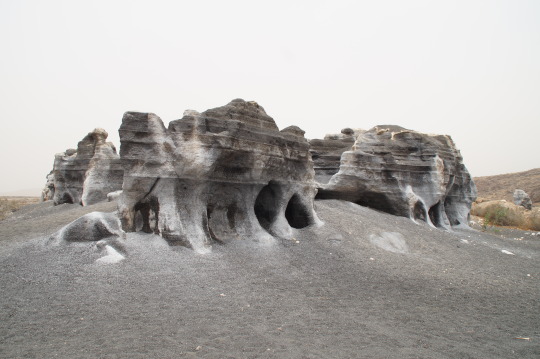

#michael schottenberg#schotti#schotti unterwegs#schotti to go#orf#spanien#kanarische inseln#kanaren#lanzarote#arrecife#césar manrique#fundacion manrique#casa manrique#camilo josé cela#villa lagomar
2 notes
·
View notes
Text
Aïe, aïe, aïe ! Ça pique au Jardin de Cactus de Lanzarote
Aïe, aïe, aïe ! Ça pique au Jardin de Cactus de Lanzarote
Voici une découverte que j’ai vraiment adoré! Cette visite doit incontestablement faire partie de vos incontournables lors de votre séjour à Lanzarote, c’est indéniable! Imaginez-vous : vous vous retrouvez au cœur d’une plantation de plus de 4500 cactus avec plus de 1400 espèces différentes ! Ça vous pique hein?? Il y a de quoi! Le Jardin de Cactus est un lieu emblématique de l’île. Nombreux sont…
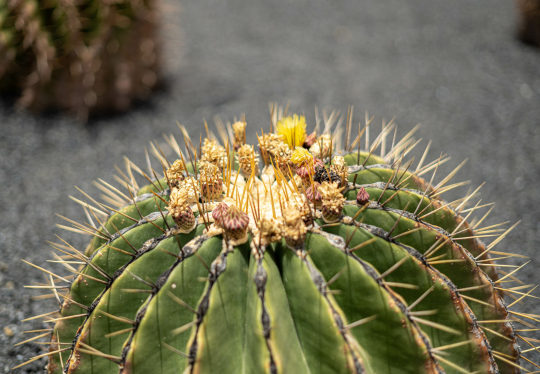
View On WordPress
#Aéonium#Agave Shawii#Aller au Jardin de Cactus Lanzarote#Arbre pieuvre#Art César Manrique#Attractions phares Lanzarote#Biographie César Manrique#Blog Voyage Lanzarote#Cact Lanzarote#CACT Lanzarote tarif#Cactus Lanzarote#Centre Naturel Lanzarote#Cephalocereus Senilis#César Manrique#Cojines de Suegra#Coussin de Belle-Mère#Création de César Manrique#Echinocactus Grusonii#Euphorbia Candelabrum#Ferocactus Pilosus#Gofio Lanzarote#Goûter du cactus#Hembra y Macho#Jardin de Cactus#Jardin de Cactus César Manrique#Jardin de Cactus Guatiza#Jardin de Cactus Lanzarote#Jardin de Cactus Tarif#Lanzarote Blog#le Jardin de Cactus
8 notes
·
View notes
Text
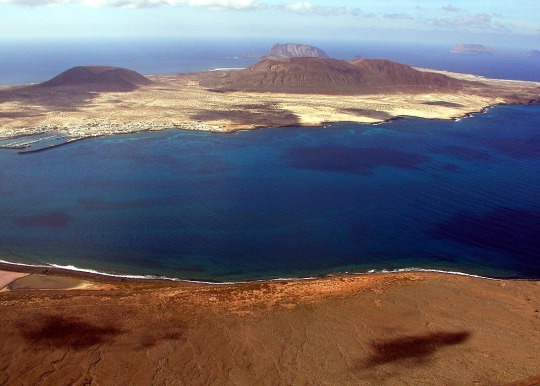
La octava isla
En la fotografía que comparto se puede ver la isla de La Graciosa, y al fondo, el resto de islas que forman el archipiélago Chinijo.
La imagen está tomada desde El Mirador del Río, obra realizada por César Manrique sobre el Risco de Famara en Lanzarote. El Río es el brazo de mar de un kilómetro de anchura que separa la isla de Lanzarote de la isla de La Graciosa (la octava isla).
3 notes
·
View notes
Text





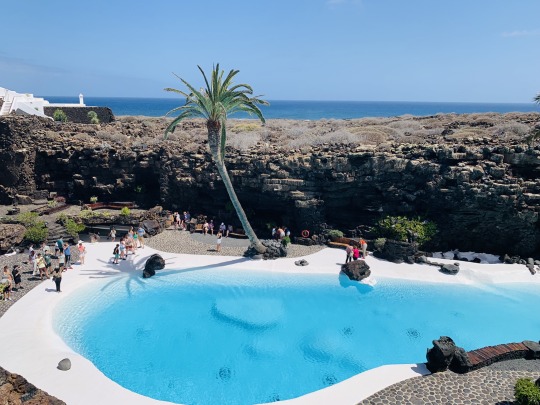
Los Jameos del Agua is the first Art, Culture and Tourism Center created by César Manrique; a natural space created inside a volcanic tunnel.
Inaugurated in 1968, the artist, painter and sculptor transformed the space into a unique work that represents the maximum expression of his ideology: artistic creation in harmony with the environment and nature.
Like La Cueva de los Verdes, Los Jameos del Agua originated after the eruption of the La Corona Volcano. The word “jameo” derives from Guanche origin, and refers to the hole produced as a result of the collapse of the roof of a volcanic tube, in this case, the volcanic tube of La Corona.
César Manrique was able to transform the environment and enhance its beauty even more, creating an idyllic symbiosis between the cave’s potential and his creative resources. His vivid hands, together with his privileged mind, modeled the basalt to give shape to a unique space in the world.
The work was completed in 1977, resulting in Manrique’s first major intervention in the Lanzarote landscape and being declared a Site of Scientific Interest and an Asset of Cultural Interest in the category of Historic Garden. The space is formed by three jameos or openings. The Jameo Chico, where the access to the interior is made and the restaurant is located, as well as a hidden entrance to the famous Tunnel of La Atlántida; the Jameo Grande, where the swimming pool is located, and the Jameo de la Cazuela, which is located behind the stage of the auditorium.
This is a natural auditorium with a capacity for 550 people formed by basalt stone that offers magnificent and extraordinary acoustics. The stage is located inside a section of the volcanic tube, giving it an unprecedented beauty and sound, and the seats are positioned following the natural slope of the floor, which goes from the access through the Jameo Grande to the opening of the next jameo.
The subway aquatic habitat of the Jameos del Agua is of great richness, presenting a crystalline lagoon of about 7 meters deep. The origin is produced by the filtration of seawater, being below sea level. This curious volcanic ecosystem is home to some 77 endemic species of great scientific interest, among which the Munidopsis Polymorpha stands out: it is the famous Blind Crab, protagonist and symbol of the center.
*The Blind Crab is in danger of extinction, and metals are highly dangerous for these small and beautiful animals. Therefore, it is strictly forbidden to throw coins or other objects into the lagoon. Please help us to protect their environment.
4 notes
·
View notes
Text
One day I'll take a flight to Lanzarote and go see César Manrique House Museum and whatever else interesting there might be on the island. Or that's what I wish anyway. We'll see. It's so funny though, when I was younger I was terrified of the mere thought of flying, and now I wish I could travel by plane! Okay, I admit I still would be uneasy but statistically flying is the safest way to travel so...
1 note
·
View note
Text
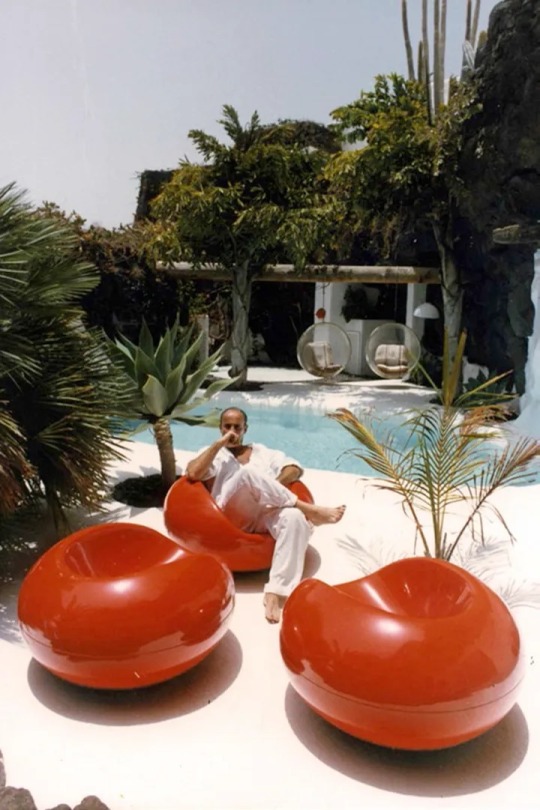
César Manrique at his Volcano house.
4 notes
·
View notes
Text

Design by César Manrique
2 notes
·
View notes
Text
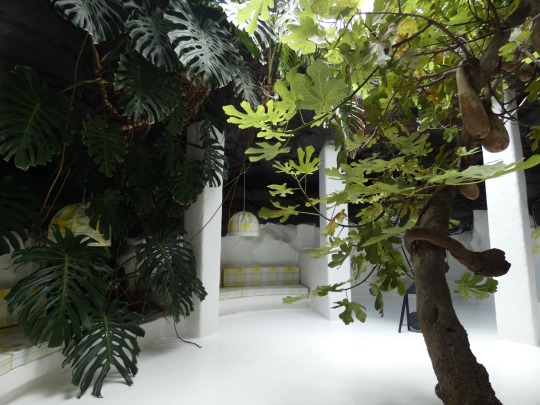
Fundación César Manrique, Lanzarote. June 2022
4 notes
·
View notes
Text


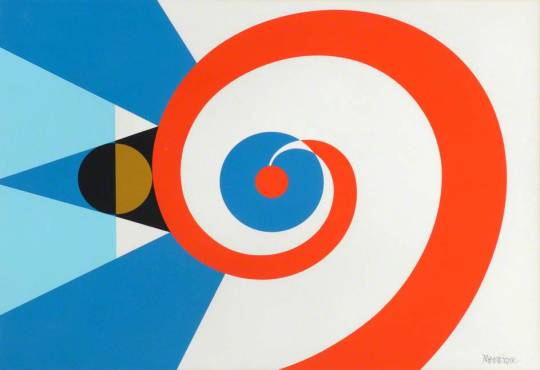
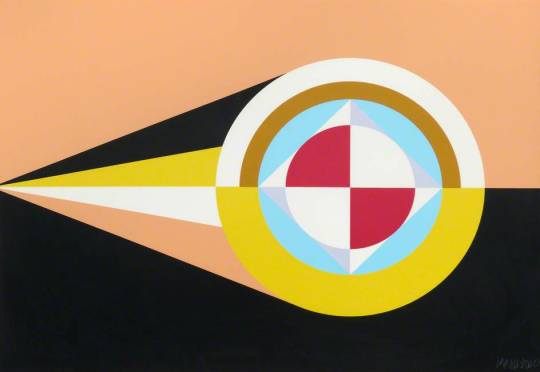

Now for something different yet adjacent: (Some??) Flags of the Undiscovered Planets by César Manrique.
Some background: https://wikioo.org/paintings.php?titlepainting=Flags+of+the+Undiscovered+Planets+2&artistname=C%C3%A9sar+Manrique
1 note
·
View note
Text
2024 Lanzarote Spring Sun
Tuesday 9th April
Today was a busy day.
I had been asked to plan a route yesterday. A route to Mirador del Rio to see the sunset.
First stop: Lanzarote Aquarium. We enjoyed looking at the fish and the sharks and stuff. They had an ocean tank with Grey Sharks and a Zebra shark and another with blacktip reef sharks. It was an interesting place.
Lunch: We crossed the road after leaving the aquarium and went to the Grandfather Bar, which had a €6 burger/fries/drink deal. It was actually pretty good.
Second Stop: We had aimed to go to the pirate museum next. We headed into Teguise, and had to loop around once or twice to get to the entrance. Some dude was putting down a barrier and told us we couldn't go to the castle on the hill. We exited and entered a front yard with a billboard next door, and concluded that the museum went out of business a few years back and was turned into houses. We had to give up on the museum... :(
On our way to the next point of interest we came across the Stratified City. A city of volcanic rock, which has been weathered into all sorts of interesting shapes.
Stop 3: Cactus Gardens.
I'd seen this when looking for things to do and dismissed it due to the high winds. Dad and my little brother had also both dismissed it as probably going to be a little bit shit. It was amazing. The bronze work gates, and railings, the wooden cactus themed door handles, the volcanic stone walls and buildings. Not to mention the number of rad cacti that were there. We only had 40 minutes there, but it was awesome.
Stop 4:
We stopped in Arietta and Punta Mujeres to admire the massive crashing waves, which had already demolished the end of their pier.
Stop 5: Casa Museo de César Manrique
We then headed inland to the home of the island's favourite artist, César Manrique. He had some abstract paintings that weren't so well received amongst our number, but his home (a slightly eccentric renovation on an old Palm Orchard Farm House) was really cool. He had a massive conservatory window in his bathroom, but had then walled the outside to prevent onlookers. He also designed Mirador del Rio.
Stop 6: Caleta Del Mojon
Deciding that we had slightly too much time to kill to just go to the viewpoint, we ended up stopping on the side of the road near the coast. The black volcanic rock and the white sand were gorgeous contrasts. The waves were also breaking over the craggy coast reaching 40 feet high. My little brother, dad and I all went out closer to the waves, getting buffeted by the winds, the sea spray, little bits of sand, and the hot sun. It was awesome though.
Stop 7: Mirador Del Rio
We drove back inland towards the viewpoint. But it was (ridiculously) closed. Barrier down and all. We couldn't enter. We couldn't park (there's a one way loop). We couldn't hang around 90 minutes until sunset and my little sister needed to go to the bathroom.
Stop 8: Bar Folelé
We drove back south again to a bar. We had drinks. We tried some pumpkin pie, Grandma Pie and Goats cheese with fig. We then hurried back into the car
Stop 9: Mirador de Guiante
We busted ass getting to the Guiante viewpoint and got to witness the sunset from a fantastic vantage point. And we were relatively sheltered from the wind.
We then headed home in the dark. Ate pizza and then scurried off to bed.
0 notes
Text
Island Hopping Spain Holiday Packages for Sea Lovers
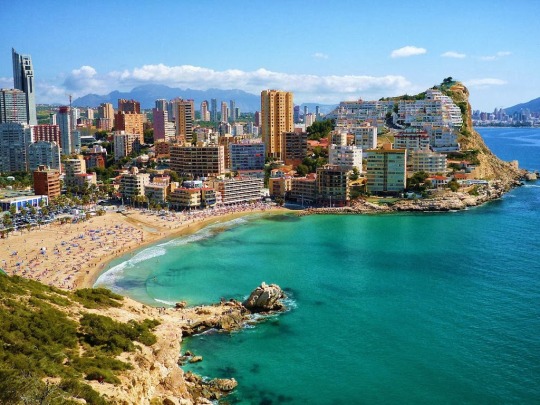
In the heart of the Mediterranean Seas, a paradise awaits sea lovers: Spain's lovely islands. The Balearic and Canary Islands, with their pristine beaches, turquoise waters, and rich cultural legacy, provide an ideal vacation for anyone seeking sun, sea, and adventure. Let's go on a voyage to discover Spain's coastline attractions with island-hopping vacation packages designed for sea lovers.
A Sea Lover's Paradise
The Balearic Islands, which include Mallorca, Ibiza, Menorca, and Formentera, entice visitors with their beautiful scenery and vibrant seaside cities. From the vibrant nightlife of Ibiza to the peaceful coves of Menorca, each island provides a distinct combination of natural beauty and cultural experiences. Meanwhile, the Canary Islands, including Tenerife, Gran Canaria, Lanzarote, and Fuerteventura, have volcanic terrain, golden beaches, and year-round sunshine, making them ideal for water sports and outdoor enthusiasts.
Island-Hopping Adventure
Join an island-hopping tour to discover the various beauty of Spain's coastal jewels. With carefully crafted vacation packages, you may travel from one island to the next, experiencing the finest that each destination has to offer. Begin your tour in vibrant Mallorca, where you can relax on gorgeous beaches, visit historic towns like Palma de Mallorca, and eat delicious Mediterranean food.
Visit our website for additional details: https://www.akshartours.us/internation-holidays/Spain/l
Set sail for Ibiza, the ultimate party destination famed for its electric nightlife and breathtaking beaches. Dance the night away in world-class clubs, or relax on secluded beaches surrounded by crystal-clear waters. From Ibiza, visit Menorca, which has craggy coastlines, hidden coves, and archaeological sites to explore.
Continue your island-hopping vacation by visiting the Canary Islands, starting with Lanzarote's volcanic vistas. Explore bizarre scenery in Timanfaya National Park, unwind on the golden sands of Playa Blanca, and marvel at César Manrique's artistic legacy.
Unique Experiences for Sea Enthusiasts
Spain's island-hopping vacation packages cater to sea enthusiasts by providing a choice of water-based activities to satisfy your sense of adventure. Dive into the crystal-clear waters around the islands to explore rich marine life and colorful underwater scenery. Whether you are a beginner or an expert diver, the Mediterranean and Atlantic waters provide unlimited options for exploration.
Those who want to stay on the surface can participate in water sports such as snorkeling, paddleboarding, or jet skiing. Glide along the shoreline, feeling the pleasant air on your skin and the warmth of the sun above as you enjoy the freedom of the open sea.
Source URL: https://susanreeed.wixsite.com/home/post/island-hopping-spain-holiday-packages-for-sea-lovers
Conclusion
In conclusion, Spain's island-hopping vacation packages for sea lovers provide an outstanding opportunity to experience the country's coastal beauties from a unique perspective. Whether you're drawn to the colorful atmosphere of the Balearic Islands or the volcanic vistas of the Canary Islands, each place offers an immersive experience of sun, sea, and adventure. So pack your bags, set sail, and go on a sea-filled vacation in Spain's island paradise.
0 notes
Text
Lanzarote for History Lovers: Places and Legends You Can't Miss

Lanzarote, a jewel within the Canary Islands, offers more than just its sun-soaked beaches and lunar landscapes. This island is steeped in history and legends, making it a paradise for history buffs and cultural enthusiasts alike. From ancient fortresses to enchanting tales of the past, Lanzarote holds secrets waiting to be discovered. Here, we embark on a journey through time, highlighting must-visit sites and the legends that breathe life into this captivating island.
Timanfaya National Park: A Geological Wonder
At the heart of Lanzarote's history is Timanfaya National Park, a testament to nature's power. The park's moon-like terrain was formed during the eruptions in the 1730s and is closely tied to local legends. The eruptions are said to have been predicted by a priest, and to this day, the area is enveloped in tales of resilience and rebirth.
A visit to Timanfaya is not just a trek through volcanic landscapes; it's an immersion into the island's vibrant history.
Castillo de San Gabriel: A Sentinel of the Past
Perched on a small islet in Arrecife, the capital of Lanzarote, Castillo de San Gabriel stands as a sentinel guarding the island's history. Originally built in the 16th century to fend off pirate attacks, it now houses a history museum.
The castle and its museum offer insights into the island's past, from its indigenous inhabitants to the European conquest. Walking through its walls, you're walking through chapters of Lanzarote's history.
Teguise: The Old Capital
The historic town of Teguise, once the capital of Lanzarote, is a labyrinth of history. With cobblestone streets, traditional architecture, and the imposing Santa Barbara Castle, Teguise takes visitors back in time.
The town's market, held every Sunday, is a blend of tradition and modernity, where local crafts and historical tales coexist. Teguise's rich history is also peppered with legends of pirates and noble knights, making every corner a discovery.
Cueva de los Verdes: A Hidden World Below
The Cueva de los Verdes, part of a 6km long lava tube, offers a journey into the underworld of Lanzarote. Formed by volcanic eruptions, these caves were once hideouts for locals from pirate invasions. Legend has it that treasures are hidden within its depths, guarded by the spirits of the past.
The guided tours not only explore the geological formations but also immerse visitors in the myths and legends that surround this underground marvel.
Jardín de Cactus: A Symbol of Adaptation
While not ancient, the Jardín de Cactus, designed by César Manrique, symbolizes Lanzarote's history of adaptation and survival. Housing over 1,000 species of cacti, the garden is set in a former quarry, illustrating how the island's inhabitants have always turned challenges into opportunities. This place, though modern, ties into the island's ethos of living harmoniously with nature, a principle rooted in its history.
The Legend of the Farmer and the Volcano
No visit to Lanzarote is complete without hearing the legend of the farmer who dared to confront Timanfaya. As the story goes, a farmer, witnessing the devastation of his land, sought to appease the volcano with offerings. This tale, woven into the fabric of Lanzarote's culture, speaks to the islanders' respect for nature's might and their resilience in the face of adversity.
Book transfer lanzarote airport to costa teguise and enjoy its rich tapestry of history and legend, is a treasure trove for those eager to delve into the past. Each site and story offers a glimpse into the island's soul, making it a must-visit for history lovers. Whether it's walking through ancient streets, exploring volcanic wonders, or listening to tales of yore, Lanzarote promises an unforgettable journey through time.
0 notes
Text
HARÍA, ELEGIDO UNO DE LOS PUEBLOS MÁS BONITOS DE ESPAÑA.
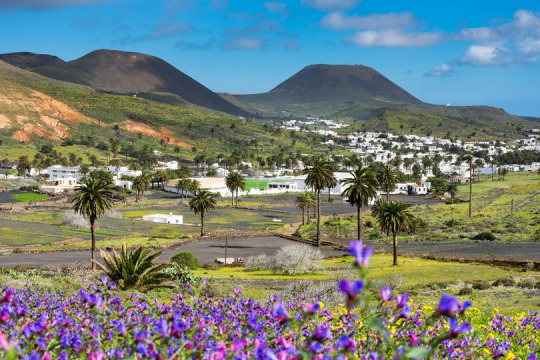
Expertos de Viajes de la prestigiosa institución National Geographic han elaborado un listado con los pueblos más bonitos de España, entre los que se encuentra uno de Lanzarote: Haría. “Hemos seleccionado estos enclaves rurales de nuestra geografía imprescindibles para una escapada”, apunta Viajes National Geographic, que añade que estos 100 pueblos reclaman su lugar destacado en el panorama rural de España. Su legado patrimonial, su trazado urbano y su armoniosa relación con el entorno los convierten en auténticas joyas. En la lista aparecen 4 pueblos canarios: Betancuria (Fuerteventura), Haría (Lanzarote), Tejeda (Gran Canaria) y Valle Gran Rey (La Gomera). Viajes National Geographic asegura que la manera más impresionante de llegar a Haría es desde el sur, "a través de la ruta que comienza en Teguise. El camino va ganando altitud gradualmente, hasta que repentinamente se asoma al valle de Malpaso. Antes de iniciar el descenso, atravesando cinco curvas cerradas, es recomendable hacer una parada en el Mirador de los Helechos para contemplar un paisaje idílico que deja una impresión duradera: el Valle de las Mil Palmeras. Este oasis de palmeras canarias abraza las casas encaladas de Haría y Máguez. Hacia el norte se alza imponente La Corona (609 m), un volcán con una silueta impecable, cuya cueva de 6 km con forma de túnel fue refugio de piratas en el pasado, y que hoy alberga dos atracciones emblemáticas del norte de la isla: los Jameos del Agua y la Cueva de los Verdes. Situado en la cornisa de El Risco, Haría es un pueblo con una arraigada tradición agrícola y artesanal, como lo demuestra el mercado que se celebra los sábados por la mañana. César Manrique optó por Haría como lugar de residencia cuando la fama y el creciente turismo en la isla alteraron su tranquilidad. En sus amplios espacios se pueden admirar su estudio-taller, numerosas obras de arte y, sobre todo, la armoniosa fusión entre la arquitectura vernácula y la innovación respetuosa con el entorno natural". [Fotografía: Shutterstock]. Buenos días. ¡Feliz lunes!
1 note
·
View note
Text

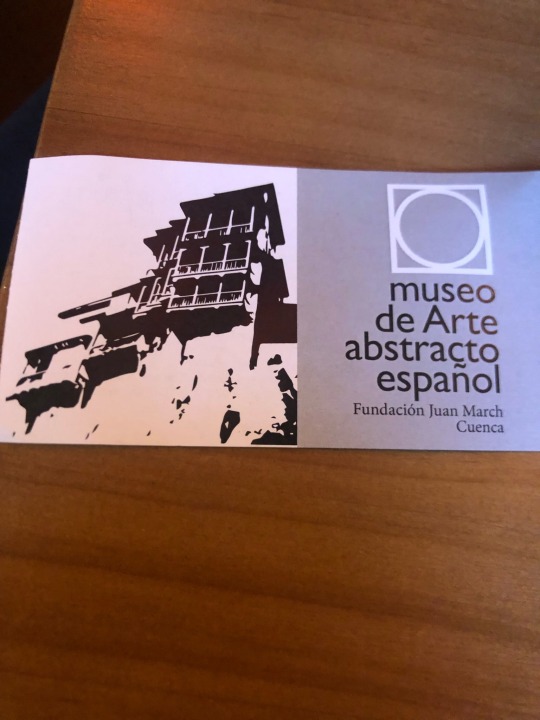
Las fotografías que comparto son de la fachada del Museo de Arte Abstracto Español en las Casas Colgadas, una edificación medieval de la ciudad de Cuenca. La ciudad se encuentra en la comunidad autónoma de Castilla-La Mancha, y es la capital de la provincia homónima.
El museo contiene una colección muy completa de pintura y escultura abstracta española, con obras de Elena Asins, Antonio Saura, César Manrique o Fernando Zóbel, principal valedor del centro.
4 notes
·
View notes
Text
9 mejores lugares para visitar en Lanzarote

Lanzarote es el destino ideal para conocer pues cuenta con maravillosos paisajes lunares, volcanes, playas vírgenes, pueblos característicos y un clima envidiable.
Por lo que si estás pensando en visitar esta maravillosa isla, en este artículo os contaremos los lugares y actividades que no podemos perdernos:
9 LUGARES QUE NO PODEMOS DEJAR DE VISITAR EN LANZAROTE
Para poder visitar esta preciosa isla, siempre podremos alojarnos en hoteles en Lanzarote y conocer los siguientes lugares:
- Parque Nacional de Timanfaya: se trata de una gran cadena de volcanes que seguro no nos dejará impasibles. Es una visita imprescindible. Durante este recorrido podremos admirar los mayores conos volcánicos de Timanfaya: las Montañas del Fuego, la Montaña Rajada, Calderas Quemadas…
- Jameos del Agua: hace muchos años el volcán de La Corona entró en erupción y formó un jameo. Allí el escultor César Manrique originó un proyecto turístico para dar a conocer este fenómeno de la naturaleza, al que bautizó como Jameos del Agua.
https://carreteandoblog.com/9-mejores-lugares-para-visitar-en-lanzarote/
Read the full article
0 notes